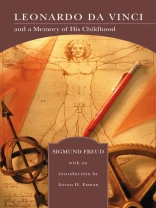Sigmund Freud once described his essay on Leonardo da Vinci as the most beautiful thing he ever wrote. In Leonardo da Vinci, of course, he had as his subject not just an ordinary Italian painter, but the prototype of the universal genius, the ‘Renaissance man, ‘ the creator of some of the most beautiful, familiar, yet mysterious paintings of all time. Today, almost a century after its publication in 1910, Leonardo da Vinci and a Memory of His Childhood remains a masterpiece of what Freud called ‘pathography’ – the effort to understand the life and works of a celebrated cultural figure through the investigation of his or her crucial psychological conflicts. A master of German prose style, Freud was awarded the Goethe Prize by the City of Frankfurt in 1930 for the literary quality of his voluminous writings on the workings of the human mind.
Despre autor
Sigmund Freud was born in 1856 in Freiburg, a small city in Moravia, the eastern part of the Austro-Hungarian Empire, and moved with his parents to Vienna when he was three and a half years old. There he lived, obtained his classical Gymnasium education, graduated from medical school, raised his family, and after a period of laboratory research, undertook the study and treatment of patients with neurological and emotional disorders. It was in that setting that, in the waning years of the nineteenth century, he began to develop the theory and technique of psychoanalysis, publishing, among other things, such major works as
The Interpretation of Dreams and
Three Essays in the Theory of Sexuality. After the German absorption of Austria in 1938, Freud was helped by some of his students and followers to move to London to escape the Nazis anti-Semitic persecution. The next year, after completing his final book,
Moses and Monotheism, he died, widely celebrated as the founder of what had by then become the international psychoanalytic movement.












